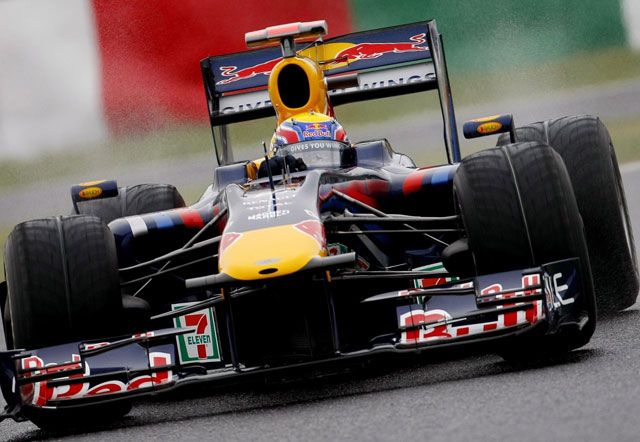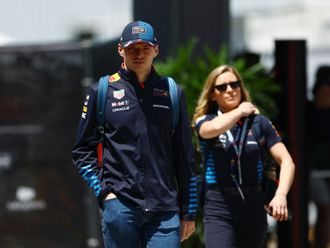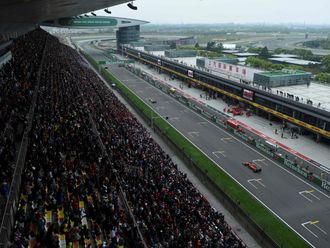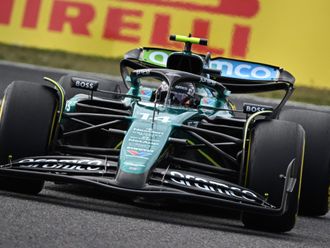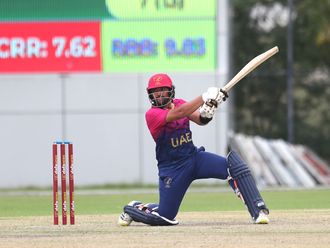Abu Dhabi: Like many other aspects of the Yas Marina Circuit, the lighting system in place for the first-ever day-night Formula One Etihad Airways Abu Dhabi Grand Prix on November 1, is likely to set a new benchmark for a racing venue.
Outlining some of the salient features of the challenging nature of the lighting system which makes Yas Marina Circuit one of the largest permanent-venue lighting projects, Jeff Rogers, vice-president of Musco Lightings, said primary areas for design consideration were drivers, television and the audience.
"Primary areas for design consideration and recommendation were drivers, television, and spectators. Musco engineers were able to not only design the lighting system for optimal performance but also to incorporate aesthetic elements, like the triangular configuration of the columns to compliment other architectural elements of the track. Musco engineers invested more than 2,900 hours of time to meet the unique challenges of this project," he said.
One of the main features was the energy-saving element and Rogers said the lighting system in place would reduce operating costs by as much as 50 per cent.
"Musco's Green Generation Lighting provides substantial energy, maintenance, and operational cost savings compared to typical floodlighting technology. Spill and glare light are reduced by half while operating costs are reduced by as much as 50 per cent. The lighting system at Yas Marina requires one-third less energy than other floodlighting technologies would consume," he said.
The focused beam and relatively low mounting of the Mirtran fixtures, along with the energy-efficient Green Generation Lighting, combine to achieve the reduction in energy use.
"The Yas Hotel that spans a portion of the circuit was an important consideration when designing the lighting system. Multiple architectural opinions were sought to seamlessly blend the track lighting in with the surrounding venues without interfering with any of them."
Helicopter traffic
Another consideration was made for the regular helicopter traffic to Yas Island. Eighteen of the drag strip lighting columns were designed so that they could be repositioned to light the nearby helipad.
"To successfully illuminate Formula 1 racing, light levels needed to be provided to meet the sophisticated television package of the high-speed sport. The lighting had to be optimal for spectators viewing the racing action from the grandstand at the circuit," Rogers said, explaining some of the challenges of the project.
There are more than 4,700 luminaires installed on approximately 550 different structures at Yas Marina Circuit and the drag strip.
About 4,000 of these luminaires are Musco's Green Generation Lighting.
Another 300 units are Musco's patented Mirtran system developed specifically for motorsports.
There have been special enhancements to this system which were developed specifically for application to road course circuits.
The remaining luminaires have been installed for the track's tunnel and runoff areas. The lights are installed on steel poles ranging in heights from four to 43 metres or special build structures designed for attachment to the grandstand or pit buildings.
Combined, this equipment will provide a focused and uniform lighting level ranging from 1,500 vertical lux on the F1 track to 800 vertical lux on the adjoining drag strip.
"Timing was of the utmost importance for a complex project on the scale of Yas Marina. Musco was able to design, manufacture, ship, and install 132 ocean containers and 28 air freighted crates of equipment between the time the contract was awarded to Musco on November 6, 2008, [designs were approved in February 2009], and the installation was completed on August 15, 2009," Rogers said.


